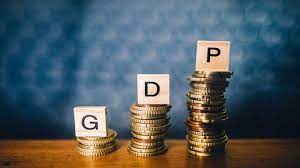According to an RBI article, India must grow at an average annual rate of 7.6% to achieve development by 2047
According to a piece in the Reserve Bank’s July bulletin, India might attain developed status by 2047 with real GDP growth averaging 7.6% annually over the following 25 years.
According to the article titled “India @ 100,” the effort may not be simple given the nation’s existing level of capital stocks, infrastructure, and skill sets.

On August 15, 2022, the 75th anniversary of India’s independence, Prime Minister Narendra Modi delivered a speech to the nation in which he outlined a plan for the following 25 years to help India become a developed country by 2047.
The paper by Harendra Behera, Dhanya V, Kunal Priyadarshi, and Sapna Goel said that for India to reach the per capita income level necessary to become a developed economy, real GDP must expand at a rate of 7.6% yearly during the next 25 years.
The Department of Economic and Policy Research of the RBI is home to the writers.
The central bank declared that the opinions stated in the piece are their own and do not reflect its own.
India saw growth of 7.2% in 2022–2023. The current fiscal year’s GDP growth is expected to increase by 6.5%, according to the RBI.
According to the writers, the article offers a general road map that would allow India to achieve economic development by 2047–2048.
India has to improve its industrial sector to increase its proportion of the GDP from the present level of 25.6% to 35% by 2047–2048 in order to rebalance its economy.
In the next 25 years, the article said, “Agriculture and services activity would have to grow at 4.9 percent and 13% per annum, respectively, with their sectoral shares in GDP at 5 percent and 60%, respectively, in 2047-48.”
It also said that India’s per capita GDP must increase 8.8 times from its present level in order for it to become a developed nation by the year 2047. In other words, the USD 2,500 per capita GDP that is now in place must increase to USD 22,000 by 2020.
This study “explores the potential drivers of growth over the next 25 years and the challenges that may arise necessitating timely and targeted policy responses to effectively tackle them,” according to the statement.
The article also said that investing in physical capital and making extensive changes in a variety of industries, including education, infrastructure, healthcare, and technology, are necessary for sustainable growth.
Driving this transition requires cooperation between the public and corporate sectors, civic society, and the general public.
A nation is not classified as “developed” according to any special standards. Based on per capita income (PCI), the World Bank categorizes nations as low-income, lower-middle-income, upper-middle-income, and high-income.
A nation is categorized as high-income if its per capita income in 2022–23 is USD 13,205 or more, according to the World Bank.
Countries are divided into two main categories by the International Monetary Fund (IMF): Advanced Economies (AEs) and Emerging Market and Developing Economies (EMDEs). This is determined by three factors: per capita GDP, export diversification, and financial interconnectedness on a global scale.
The essay claims that extended periods of sustained high growth are not uncommon in economic history and that these events underscore the significance of technology and globalized markets in maintaining high growth.
It was reported that India needed to break its previous record in order to meet the objective for nominal per capita GDP growth of 9.1%.
Concerning the difficulties, the writers said that building up both physical and human capital would be essential if India was to become a developed country by 2047.
According to the article, if India’s real GDP grows by 7.6% annually over the following 25 years, it might attain developed status by 2047.
By focusing on structural reforms, investments, logistics, economic digitalization, skilling up the labor force, and sectoral policy initiatives covering manufacturing, exports, tourism, education, and health, the article’s analysis demonstrates that it is possible for India to become a developed nation by 2047.
India must adopt a multi-pronged strategy in order to use the enormous labor pool efficiently and take advantage of development prospects in knowledge-based industries, it was stated.







